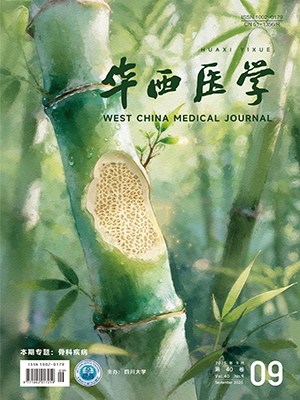| 1. |
Jansen TC, Van Bommel J, Bakker J. Blood lactate monitoring in critically ill patients: a systematic health technology assessment. Crit Care Med, 2009, 37(10): 2827-2839.
|
| 2. |
Broder G, Weil MH. Excess lactate: an index of reversibility of shock in human patients. Science, 1964, 143(3613): 1457-1459.
|
| 3. |
江學成. 危重疾病嚴重程度評分臨床應用和意義. 中國危重病急救醫學, 2000, 12(4): 195-197.
|
| 4. |
Knaus WA, Zimmerman JE, Wagner DP, et al. APACHE-acute physiology and chronic health evaluation: a physiologically based classification system. Crit Care Med, 1981, 9(8): 591-597.
|
| 5. |
陳捷, 黃淑芬, 程小蕓, 等. APACHE Ⅱ評分在嚴重創傷骨科患者的評估及分級護理中的應用. 創傷外科雜志, 2012, 14(5): 458, 466.
|
| 6. |
Joe BH, Jo U, Kim HS, et al. APACHE Ⅱ score, rather than cardiac function, may predict poor prognosis in patients with stress-induced cardiomyopathy. J Korean Med Sci, 2012, 27(1): 52-57.
|
| 7. |
Rhee JY, Kwon KT, Ki HK, et al. Scoring systems for prediction of mortality in patients with intensive care unit-acquired sepsis: a comparison of the pitt bacteremia score and the acute physiology and chronic health evaluationⅡ scoring systems. Shock, 2009, 31(2): 146-150.
|
| 8. |
De Freitas ER. Profile and severity of the patients of intensive care units: prospective application of the APACHE Ⅱ index. Rev Lat Am Enfermagem, 2010, 18(3): 317-323.
|
| 9. |
范學朋, 柳梅, 尚小珂, 等. APACHEⅡ評分與危重患者血糖控制目標值的關系. 中國急救醫學, 2013, 33(10): 921-924.
|
| 10. |
Stachon A, Segbers E, Hering S, et al. A laboratory-based risk score for medical intensive care patients. Clin Chem Lab Med, 2008, 46(6): 855-862.
|
| 11. |
Hwabejire JO, Jin G, Imam AM, et al. Pharmacologic modulation of cerebral metabolic derangement and excitotoxicity in a porcine model of traumatic brain injury and hemorrhagic shock. Surgery, 2013, 154(2): 234-243.
|
| 12. |
Jin G, DeMoya MA, Duggan M, et al. Traumatic brain injury and hemorrhagic shock: evaluation of different resuscitation strategies in a large animal model of combined insults. Shock, 2012, 38(1): 49-56.
|
| 13. |
Zhao QJ, Zhang XG, Wang LX. Mild hypothermia therapy reduces blood glucose and lactate and improves neurologic outcomes in patients with severe traumatic brain injury. J Crit Care, 2011, 26(3): 311-315.
|
| 14. |
Tisherman SA, Barie P, Bokhari F, et al. Clinical practice guideline: endpoints of resuscitation. J Trauma, 2004, 57(4): 898-912.
|
| 15. |
Spahn DR, Bouillon B, Cerny V, et al. Management of bleeding and coagulopathy following major trauma: an updated European guideline. Crit Care, 2013, 17(2): R76.
|
| 16. |
高偉波, 曹寶平, 陳子濤, 等. 乳酸和乳酸清除率對危重病患者預后的意義. 中華急診醫學雜志, 2012, 21(12): 1358-1362.
|
| 17. |
Cusack RJ, Rhodes A, Lochhead P, et al. The strong ion gap does not have prognostic value in critically ill patients in a mixed medical/surgical adult ICU. Intensive Care Med, 2002, 28(7): 864-869.
|
| 18. |
Meregalli A, Oliveira RP, Friedman G. Occult hypoperfusion is associated with increased mortality in hemodynamically stable, high-risk, surgical patients. Crit Care, 2004, 8(2): R60-R65.
|
| 19. |
管向東, 李小悅. 應重視嚴重創傷和圍術期血乳酸的監測. 中華普通外科學文獻: 電子版, 2010, 4(4): 299-300.
|
| 20. |
Grey B, Rodseth RN, Muckart DJ. Early fracture stabilisation in the presence of subclinical hypoperfusion. Injury, 2013, 44(2): 217-220.
|
| 21. |
Dossett LA, Redhage LA, Sawyer RG, et al. Revisiting the validity of APACHE Ⅱ in the trauma ICU: improved risk stratification in critically injured adults. Injury, 2009, 40(9): 993-998.
|
| 22. |
朱睿瑤, 張迪, 馮麗芝, 等. 血乳酸、膽堿脂酶與 APACHE Ⅱ評分在評估危重癥患者病情預后中的研究. 醫學研究雜志, 2014, 43(3): 65-67.
|




